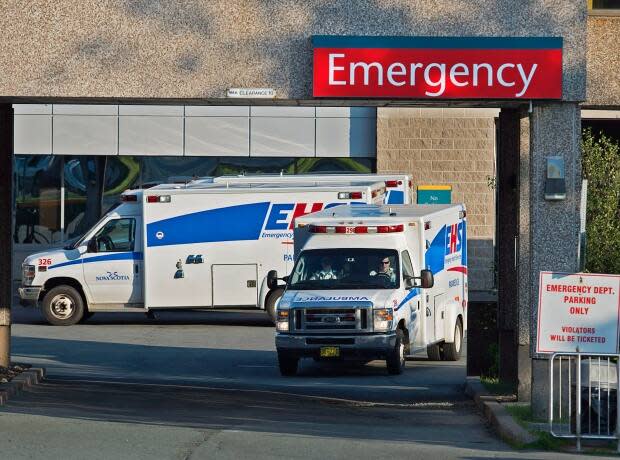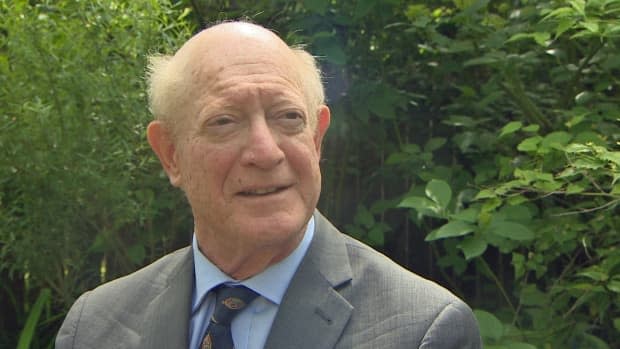Hiring more doctors and opening more ERs won't fix health-care system, says expert

Nearly a year after Premier Tim Houston and his government were elected largely on a promise to fix Nova Scotia's ailing health-care system, more than 100,000 people are without a family doctor.
But one of Canada's leading health care experts says the solution isn't hiring more doctors.
"The number of family physicians in Nova Scotia is about 15 to 20 per cent higher than the Canadian average ... so it's not just a case of not having enough of something. It's how you're using it," Michael Rachlis told CBC Radio's Information Morning on Wednesday.
He's a family doctor and adjunct professor at the University of Toronto's Dalla Lana School of Public Health. His conversation with guest host Bob Murphy has been edited for clarity and length.
Listen to the full interview here:
Why do you think there are still so many problems with accessing primary care?
In Nova Scotia's case, it has more doctors than anywhere else in the country. There's lots of examples where in Canada we don't have the team-based practice, by and large, that they have in other countries. We tend to have a lot of standalone family physicians and roughly 50 per cent of visits to family physicians would be as well done, or even better done, by somebody else.
Throughout the system, we can see that even though we don't think we have enough ambulances, we've got ambulances lined up at emergency rooms — they can't unload their patients. So is the solution more ambulances and more paramedics? In ERs, they have lots of patients who are waiting to get up to a bed in the hospital, but there's no beds available, so is the solution more ERs?

In hospitals, about 20 per cent of patients — more in some other provinces — are so-called alternate level of care or ALC patients. That means they need some care, but it's home care or rehab. They shouldn't even be at a hospital bed. So if we simply brought in more family physicians, more ambulances, built more ERs and built more hospital beds, we still wouldn't solve our problem. We have to understand where patients are coming from, what services they really need.
How do we go in a different direction then if more ambulances and more doctors is perhaps not the most efficient way of going about this?
One of the things we clearly need to do is that the morale of people within the system is just horrible. We can't even use the true capacity we've got because people aren't showing up for work. They're burnt out. They're leaving their profession so we need to do something really significant to deal with that issue.
And then we have to do what we've been told to do for decades in Nova Scotia and other provinces: we need to improve the services that we provide out of institutions or else we're never going to have enough beds in institutions. The Canadian health system actually has relatively few beds per capita compared to other countries, but we're an institutionally focused system. It's really hard to get care outside of a hospital. And our family doctors are extremely well trained, but they're not working in effective teams and they're spending so much of their time with patients that really should be managed by other people on their team.
The morale of people within the system is just horrible. We can't even use the true capacity we've got because people aren't showing up for work. - Michael Rachlis, health-care expert
So where do we start? When you discharge somebody from hospital, provide them with just a little bit better aftercare to make sure they don't come back to hospital. And then when they don't come back to hospital, then you start to get staff in hospital who don't have enough to do, and then you can put more staff into the community.

What about the many people looking for care who are on long wait lists to see specialists for elective procedures? How can we best address those waits?
That's a big problem. There are some logistical issues. For example, in many communities, you've got one surgeon who's somehow seen as the best surgeon. They have very busy practices, long wait lists and the referral doctors don't know that there's other doctors who are just as good with shorter lists. Centralized wait list lists are a major thing that we need to do. But the other thing we need to do is to increase capacity, we need to beef up our out-of-hospital treatment services. And it doesn't mean going private. The largest out-of-hospital surgical clinic in North America is part of the Queensway General Hospital in Toronto.
Do you see privatization playing any role here though?
No. Privatization of financing means that you get better care if you can pay for it, and that's completely contrary to our Medicare system. I just don't see any point to it. I see many examples of extremely efficient public sector services across the country. The private sector doesn't have the solutions, but we better get moving on the public sector solutions, or I think people in Canada will lose faith with our system.
MORE TOP STORIES:


